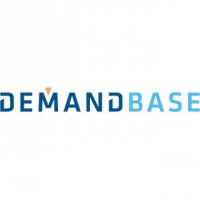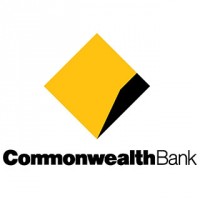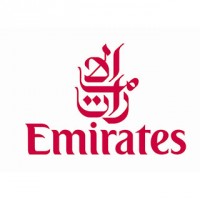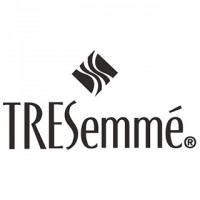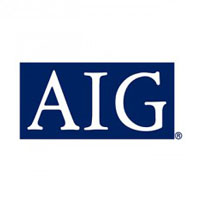Posted by arthurlaw on February 28, 2014

Project:
Demandbase initiated this project as a web redesign and after the requirements gathering phase we recommended restructuring the entire architecture of the site.
New sections of the site included Products & Services as a list what can be bought from Demandbase and Get Started for new customers or IT managers.
Key Challenges:
- Create a site with a customization engine that changes content based on the incoming user
- Design interactive content panels that make technical data more accessible
Role:
As UX lead, I defined how the customization engine would serve specific content to the user. I also managed one copywriter in creating succinct product messaging.
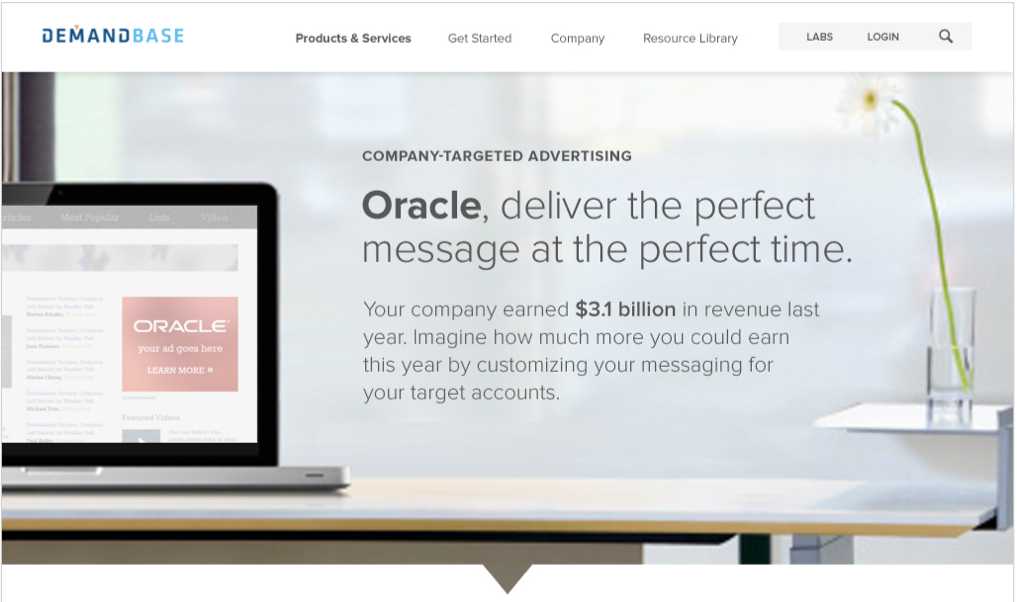
The Demandbase platform has a customization product that allows the CMS to display customized copy on web pages based on what company is visiting the website. Knowing the incoming company and 41 other attributes allows specific messaging which was defined and documented for every page.
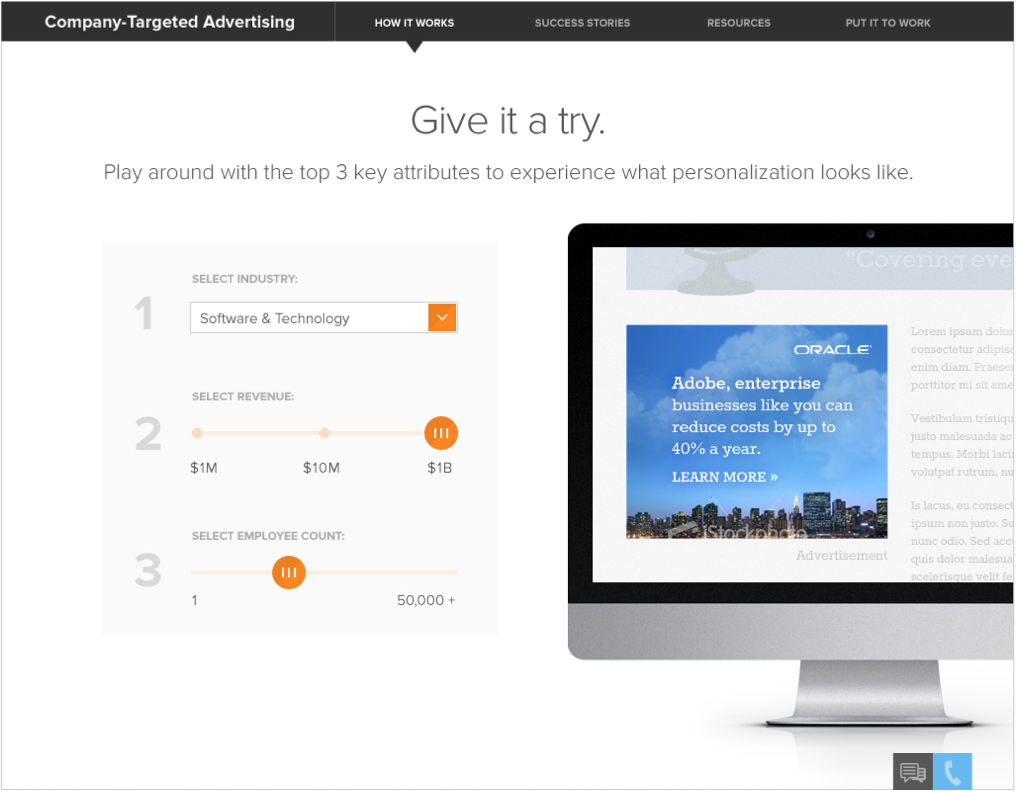
Various interactive panels were created to show the customizability of the Demandbase products. Changing the industry, revenue, and employee count would modify the advertisement on the right.
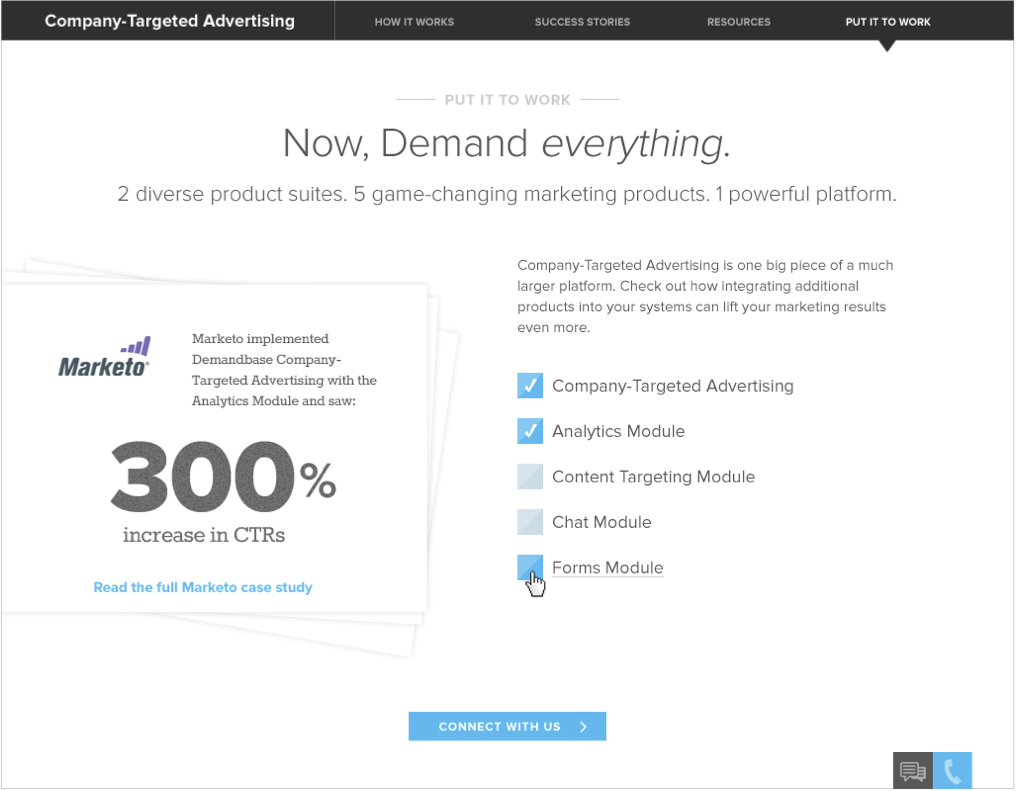
Cross selling modules were added to the bottom of every product page to show case studies of companies that were using multiple products and the advantages they gained by using more than one Demandbase product together.
Posted by arthurlaw on February 27, 2014

Project:
Commonwealth Bank of Australia started a new division called MyWealth that brought the trading of shares, properties, and other investments to the regular retail banking customer.
The concept designed in both in Sydney and San Francisco with an evolving business unit that was started along with the design of the product.
Key Challenges:
- Make trading, retirement, and property investment easy to learn and do
- Design using an agile process with a team in another country
Role:
A varied UX team was used over the year and a half with CBA of which I was the only consistent member from the agency. My work provided consistency and detailed annotations as well as designing the specifics for the Invest section of the site.

Tiles and rows were a primary UI element that displayed investments more like products that one might see in an e-commerce site to make the process of buying and selling shares more friendly to the novice investor.

Circular charts of your whole wealth was the primary component for the portfolio to allow users to see a broad picture of their investments. The user may also add investments from other banks or companies to give the user a centralized place to see their entire wealth.

Investments were constructed in the fashion of a product detail page where large hero images and ample white space for numbers made a friendlier design for each company.
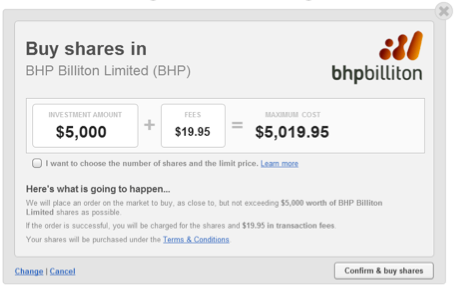
Simple controls and consumer friendly language spell out the process for trading shares.

Prototypes in the software Axure were created to conduct usability testing for each stage of the project. The test protocol and all the pages were created in San Francisco and administered by a 3rd party research team in Sydney.
Screen sharing using GoToMeeting was used for observation and live commenting during the tests.
Posted by arthurlaw on February 26, 2014
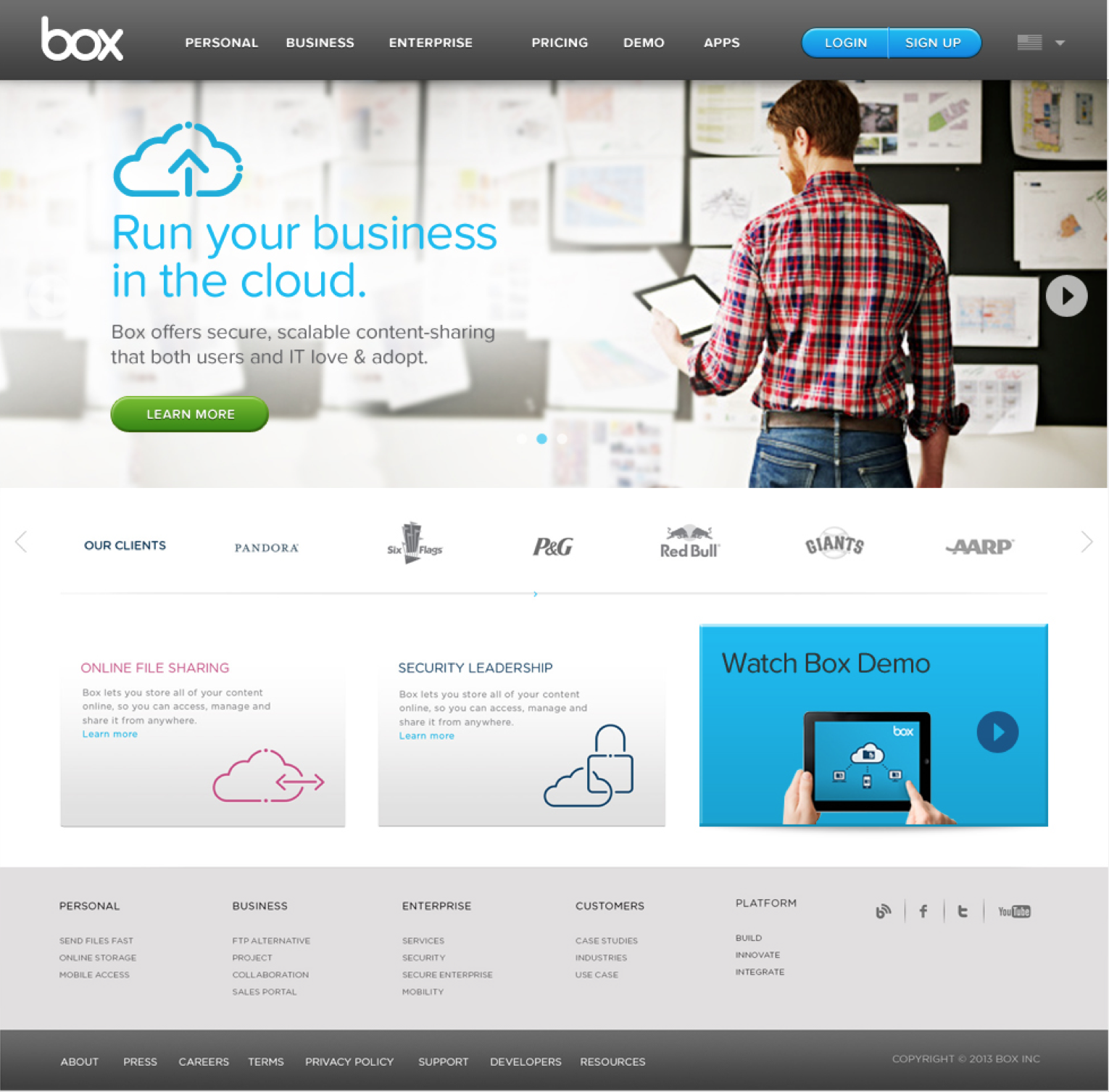
Project:
Succinct messaging and streamlining of content were primary drivers of the Box.com redesign. This project took a 2000 page site and redesigned that content in 200 pages. Individual features that had their own page were consolidated into broader solutions pages and industry specific content.
Key Challenges:
- Create a responsive site across mobile, tablet, and desktop
- Define succinct messaging and content that customers can easily read & scan
Role:
My primary role on this project set the content & site structure and facilitate those changes with the client marketing team. I managed one UX designer in wireframing the site as well as guiding the client’s visual design team in responsive page layout.

A page level navigation was introduced to let users quickly identify the content on long vertical pages and jump down to relevant content. The bar would lock to the top of the page giving the users easy access to jump around and to know how much content was remaining.
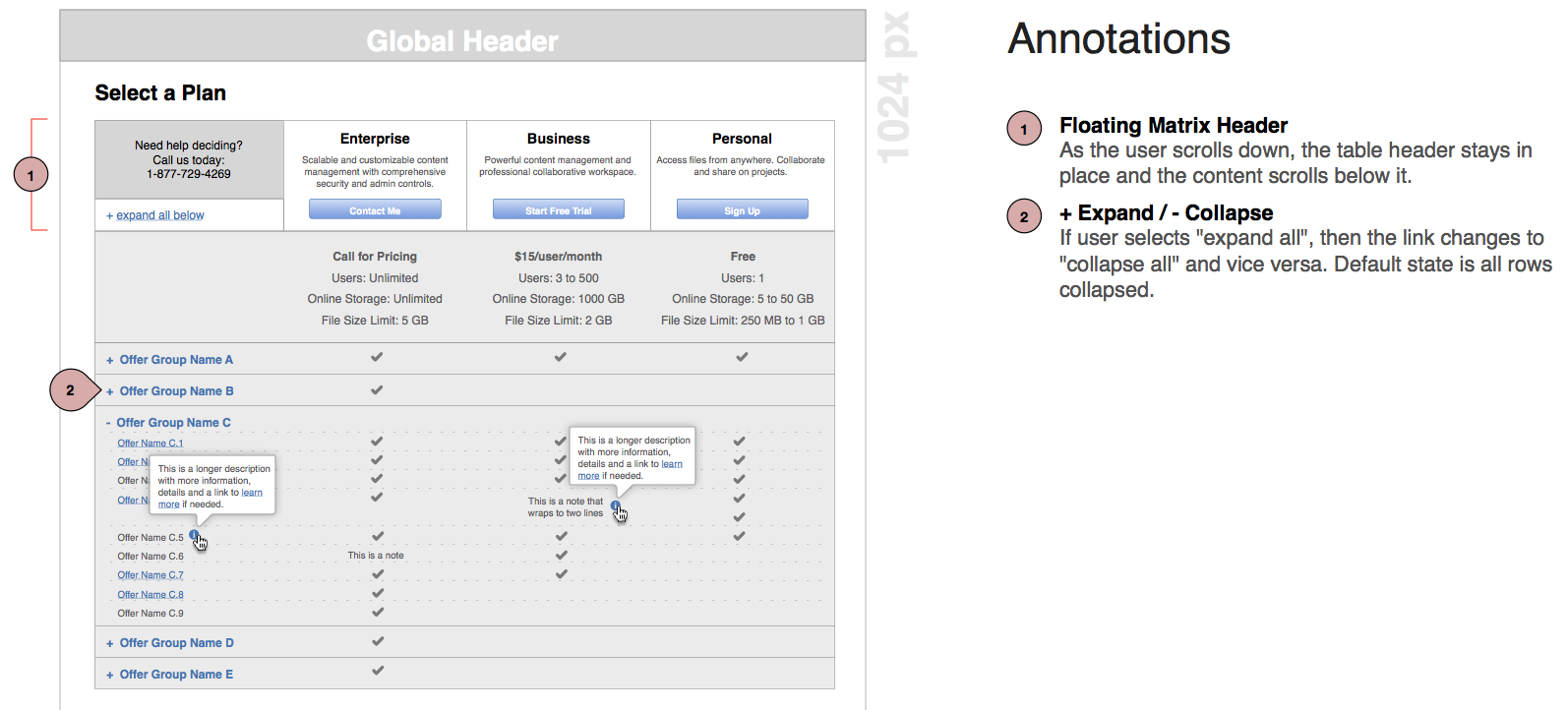
The responsive web design process used 3 different resolutions defined by using looking at the current web statistics and the devices hitting the site today as well as the popularity of various mobile devices. The design templates placed the 3 resolutions on the same page so all 3 resolutions would be considered concurrently.
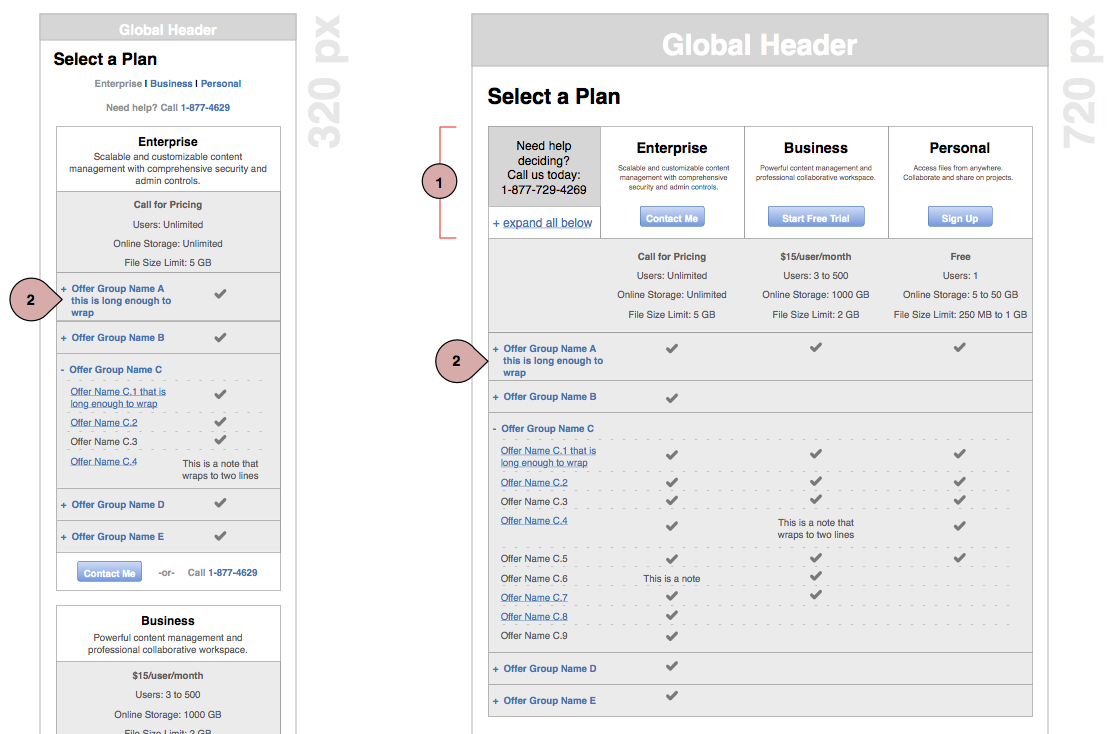
Posted by arthurlaw on February 24, 2014
Posted by arthurlaw on February 23, 2014
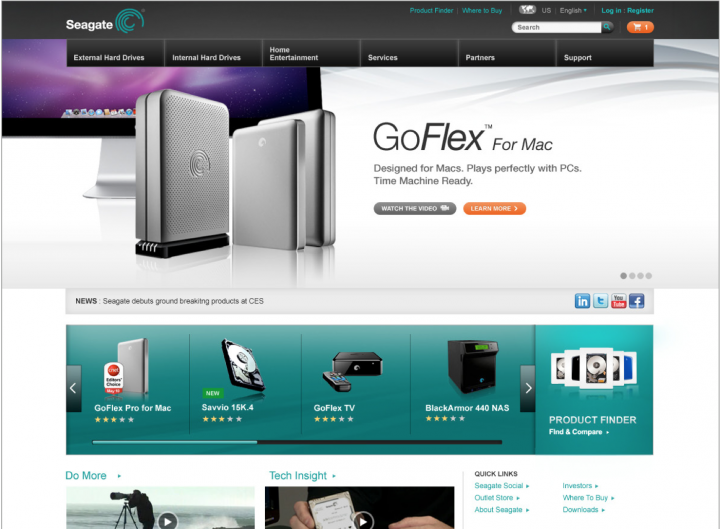
Project:
The site redesign was an overhaul of the entire site of 10,000+ pages. This incorporated new visual style, new marketing technologies and e-commerce.
Key Challenges:
- Design and launch a 10,000+ page website within 8 months
- Create a marketing platform for retail consumers and enterprise customers in Asia, Europe and the US
Role:
This site was designed by 2 UX architects; my focus was the site architecture, product marketing pages and the partner program.

A new product configurator was designed to accommodate both consumers as well as resellers to purchase hard drives of a specific configuration available from the inventory.

Registration in the reseller program was a major initiative and a flowchart for possible registration scenarios was drawn out to document and optimize how customers become part of the program. This led to a better flow and reduced the number of pages required.
Posted by arthurlaw on February 22, 2014

Project:
Two web redesign projects were initiated for the US site for Playstation.com. The first project was a device-specific site for the Playstation 3 browser that optimized for browsing using a PS controller. Information was grouped by content type to give a nod to the PS3 cross-media bar. Each wireframe was designed responsively to handle televisions at 480, 720, and 1080 resolutions.
Key Challenges:
- Design a site for a TV browser with a controller for input
- Architect a marketing database to handle all the offerings of a global media company
Role:
As the only UX designer to this project, I defined the site architecture and set the wireframes for both websites.
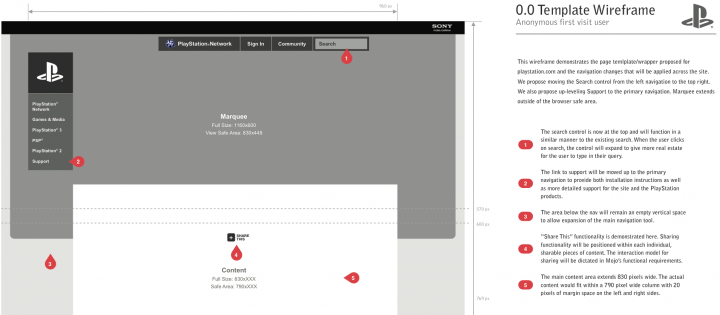
The primary us.playstation.com was also redesigned to streamline the navigation and display content optimizing for a 1024 resolution screen. The redesign also focused on bringing paid content from the PlayStation Network and other Sony subsidiaries within the Playstation website.
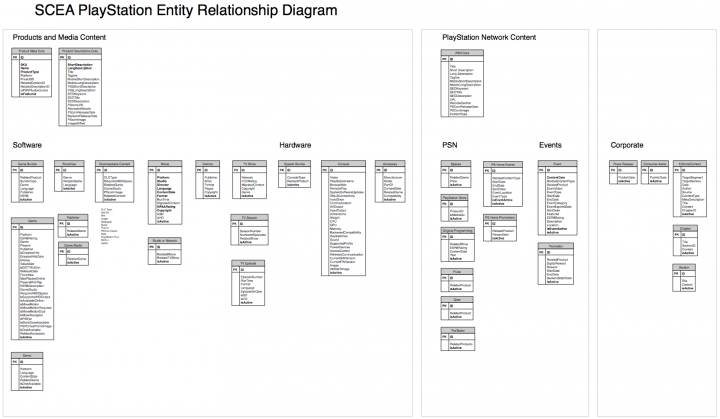
A new database was designed to power the new website. Additional data fields that would handle social media, cross sell from other parts of Sony, and upcoming products were detailed out to show how products were all connected so software & hardware products, services, live events, and promotions could all be automatically merchandised through the content management system.
Posted by arthurlaw on February 21, 2014

Project:
The web project was required to create an online experience that demonstrates the uber premium service that consumers can expect from Emirates.
The online marketing platform needed to support multiple luxury hotels and resorts with their own uniqueness and personality as well as a centralized internet booking engine that allowed pre-stay customization.
Key Challenges:
- Create one system that accommodates multiple luxury hotels without being clones
- Design a booking engine to do multi-room, multi-stay reservations
Role:
My role on the UX team was to define the architecture of this system and wireframe the booking flow. I also traveled to Dubai for 5 months to conduct contextual inquiries on how customers go through reservation and booking in the U.A.E.
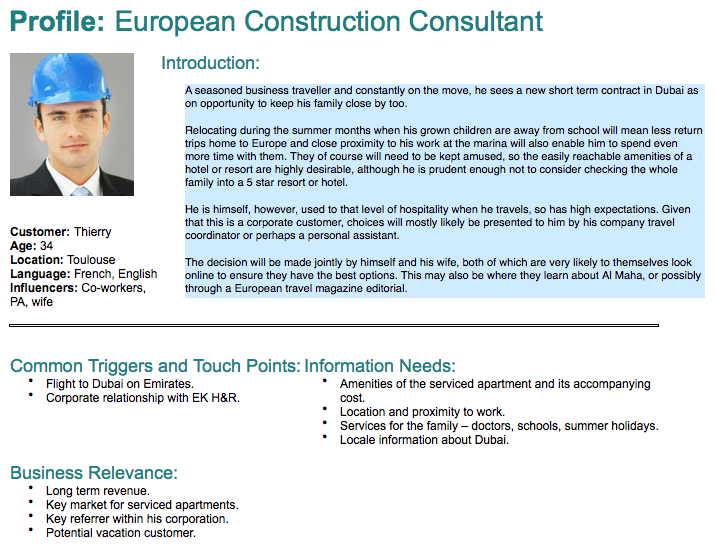
User profiles were generated from market research and sales data to classify different types of guests that would be using the website to book their hotel and resorts stays. The European business traveler was ranked as the number one target and families stopping over in Dubai on their way onwards were second.

User flows were used to illustrate how various user groups would enter the marketing platform. This could be an existing Emirates customer that receives a marketing email to drive to a customized landing page or a personal assistant that gets to the Emirates Hotels group website via search engine. All paths would lead to the Internet Booking Engine at the heart of the hotels & resort websites.
Posted by arthurlaw on February 20, 2014
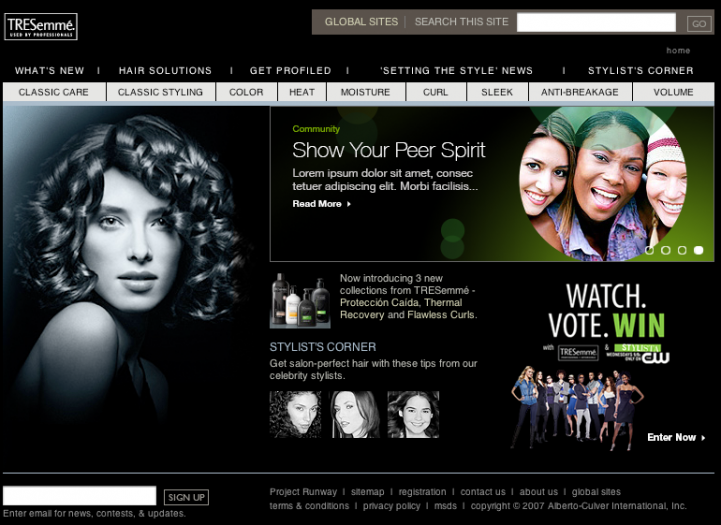
Project:
Tresemmé wanted a new social media website launched with the sponsorship of a new TV show, Stylista. On a highly accelerated schedule, a new site was designed & developed with a social media program within one quarter.
Key Challenges:
- Design a social media site and define a social program that grew a community from scratch
- Manage design & development & maintenance in a 3 month sprint
Role:
As lead UX architect, my role was to define the social media program, create the whole set of content and functionality in the site, including the modules of the blogging platform and the bulletin board system.
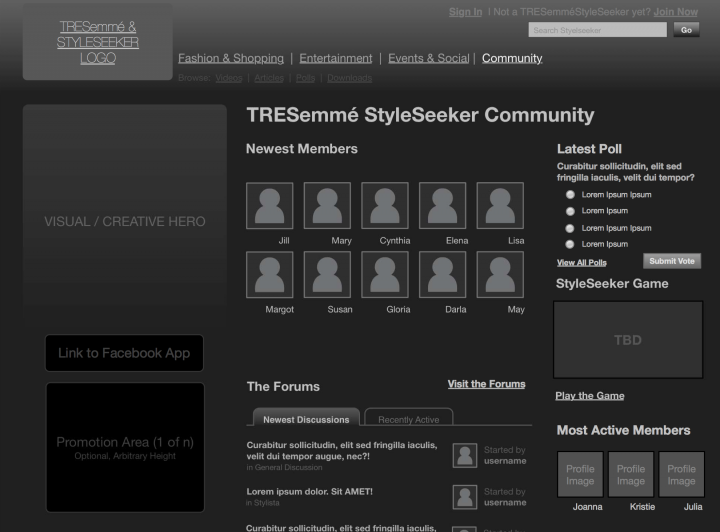
The site used a blogging platform to show articles and videos on Fashion & Shopping, Entertainment, and live events hosted by Tresemmé. These would fuel discussions on the community boards.

Content scheduling, editorial guidelines, and site moderation were all included in the planning for this social media site to plan out fresh content and spur activity within the network.
Posted by arthurlaw on February 18, 2014
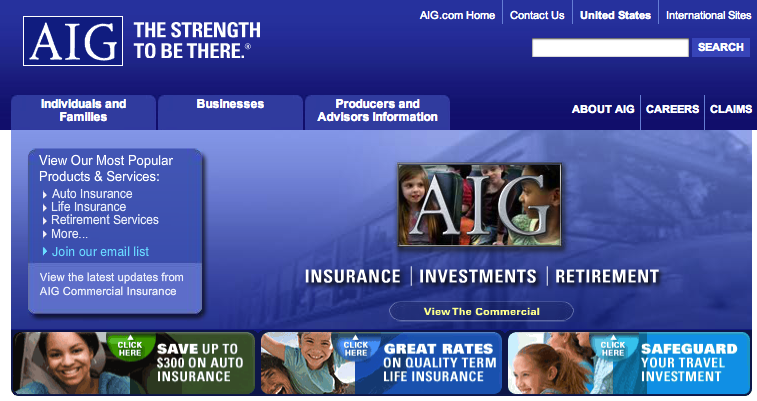
Project:
AIG.com was a full site redesign that unified AIG and its subsidiaries into one web presence. A global requirements gathering process was done to interview marketing chiefs in Europe, Asia, and North America to cover the breadth of products that AIG provided in over 100 countries.
Key Challenges:
- Create a scaleable architecture that accommodates hundreds of sub-brands
- Drive agreement between regional marketing heads across 3 continents
Role:
My role on the team was to audit the existing content structure, define the new structure with global site map and define the content migration process. I was also responsible for designing the product marketing section.

This spreadsheet was one among many that not only tracked every category of insurance product, but was used to unify a common way to consolidate products with the global stakeholders.
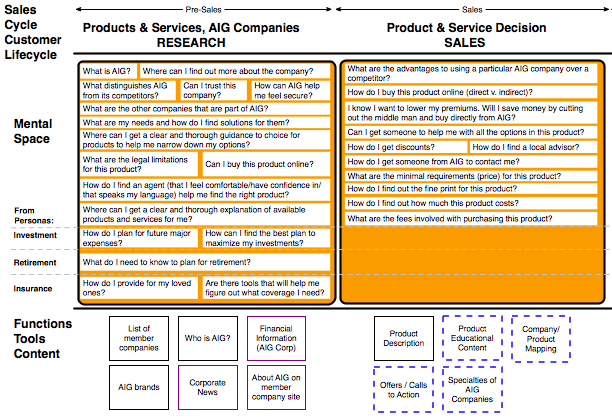
Mental model exercises were conducted with the client to account for some of the top questions each of the target audiences may have when coming to the AIG.com website. This led to deriving all the content and functionality that would belong on the new website.

This lead to a wireframing process that led to dozens of templates and modules with hundreds of states to account for the broad product portfolio ranging from auto insurance to airplane leasing.



